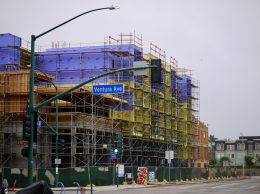Editorial: California’s budget worries are far from over
Evidence abounds that California is less than half way through the process of grinding toward a budget fix.
Legislative analysts warned on Feb. 19 that a bounce in revenue amounting to some $5 billion in December is likely to be fully erased by the time the final income tax numbers roll in after April.
A day later, on Feb. 20, California Common Sense released an in-depth analysis of spending patterns that shows a steep decline in spending on education during the current crisis versus gains for health care, state salaries and retirement perks.
K-12 educaton is now less than 30 percent of the state budget, down two percentage points from pre-recession levels.
California State University and University of California budgets are now less than 4 percent of the budget, down a full percentage point. Transportation funding has been slashed from 4.5 percent of the budget to less than 3 percent today.
Health care services now consume roughly 20 percent of the budget, up from 13 percent, and employee salaries have risen nearly a full percentage point.
Most disturbing is the fact that debt service, once next to nothing and as little as 3.6 percent of the budget in 2007 is now 4.2 percent of spending — it is only that low thanks to the Federal Reserve’s extraordinary effort to keep long-term interest rates at historic lows.
The startling news is that debt service now represents a bigger chunk of the budget than either higher education or transportation. Retirement benefits now rival in size the entire social services budget.
Increasingly, Californians are being socked with extra fees, for tuition, court filing fees, and park permits — a series of hidden tax hikes that rob disposable income from workers and hand it to retirees.
The bottom line is that California’s budget has grown but its level of services to ordinary citizens has shrunk. Even after Proposition 30, a permanent and comprehensive budget fix remains a mirage.










